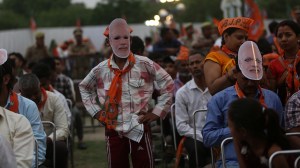- India
- International
Studying seismic activity: ‘Epicentre zone shifting towards Warna reservoir’
With only 50 per cent energy release, Koyna region likely to witness more mild earthquakes, measuring less than 5 on Richter Scale, in future
 Six decades ago, a powerful earthquake had struck the area near this reservoir in Koyna.
Six decades ago, a powerful earthquake had struck the area near this reservoir in Koyna.
Scientists studying the seismic activity triggered at the Koyna-Warna reservoirs — located near Karad, 165 km from Pune — have observed that the epicentre of earthquakes recorded in the recent decades are shifting towards the southern direction, and are concentrated around the Warna reservoir.
Six decades ago, a powerful earthquake measuring 6.6 on the Richter Scale had struck the area near the Koyna reservoir, causing massive damage in the locality. Apart from Koyna reservoir, there are only three other seismically-active reservoirs in the world — located in China, Zimbabwe and Greece — which have recorded earthquakes stronger than 5 on the Richter Scale.
This dam, according to geologists and seismologists, is one of the 120 reservoirs in the world which are seismically active. Experts, after analysing data sets collected since 1967, found that the seismic activity peaked in this region during the monsoon. This is believed to be triggered by a sudden rise in the water level at the reservoir.
Two earthquake data sets — from 1970 to 1990, and from 2003 to 2010, were used to conclude that higher the levels of water stored, higher the seismic activity, making it crucial for dam operators to store and release water appropriately.
“But, in the recent decades, we have also found that most earthquakes, with an epicentre located at a depth ranging between 2-8 km, have been shifting away from Koyna reservoir, towards Warna reservoir. This could be due to shifting of the faultline in that direction,” said Dr Nitin Karmalkar, Vice-Chancellor of Savitribai Phule Pune University (SPPU) and a senior geologist associated with the central government’s Borehole Drilling Project at the Koyna-Warna reservoirs.

Karmalkar made the comments at a public talk organised by the India Meteorological Society, Pune chapter, recently. The team has been drilling at the site in order to identify the exact fault which is triggering frequent earthquakes in the region, though a majority of them have been within an intensity of 5 on the Richter Scale.
However, the challenges involved are many, as the reservoir is built on hard basaltic rock. Despite this, the team, along with ONGC, has been carrying out drilling, and has so far managed to drill 14 boreholes, their depths ranging between 900 metres to 1.9 km, said Karmalkar. The team plans to drill to a maximum depth of 8.5 km in the coming years.
“Our further course of exploration remains in identifying the direction in which the faultline is shifting, its dimensions in terms of length and breadth, and slippage movements between the faultlines. The idea is to identify the right spot to puncture the fault, where sensitive instruments can be installed, which can then be used to issue futuristic earthquake warnings systems,” explained Karmalkar.
Yet another interesting fact about the Koyna – Warna reservoirs is that geologists believe that only 50 per cent of the residual stress or energy has been released in the form of earthquakes so far. “This means earthquakes up to an intensity of 5 would continue to take place at this location. And the real test for our team lies in actually tracing the exact spot where the fault is triggering shocks,” said Karmalkar.
Apr 24: Latest News
- 01
- 02
- 03
- 04
- 05







































